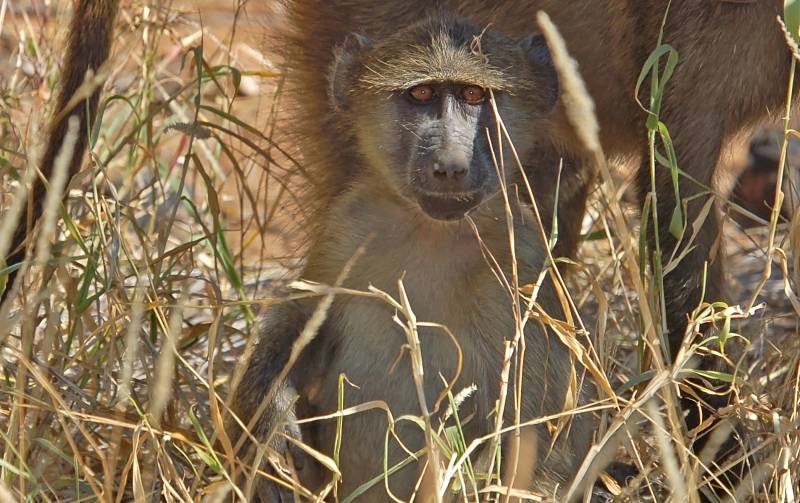Baby Baboon
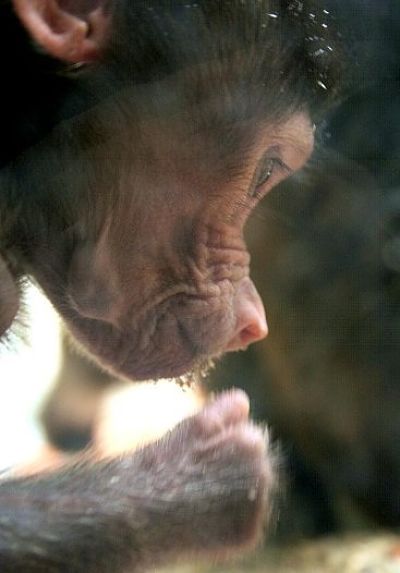 Baby Baboon Deep Cocentration
Baby Baboon Deep CocentrationA baby baboon is born with an instinct to grasp tightly with both hands and feet.
They need this ability to cling to their mothers chest as she makes her way through trees or brush.
The female will be pregnant for 6 months and give birth to one, very rarely two, youngsters.
A baby baboon is called an infant and is helpless at birth.
The eyes are open however, and the infant is well furred.
The newborn baboon also has the typical young primates ingrained gripping reflex, and is able to hold itself against its mothers belly with tightly grasping hands and feet almost immediately after birth.
Infants ride against the mothers stomach or chest for the first several weeks, and then begin to ride on her back, usually in an upright position like a little jockey.
Baboon babies are extremely intelligent, alert and curious.
Within a few weeks the youngsters begin to explore their world climbing, running and jumping.
They spend lots of time with their peers in active and exciting playgroups overlooked by several moms.
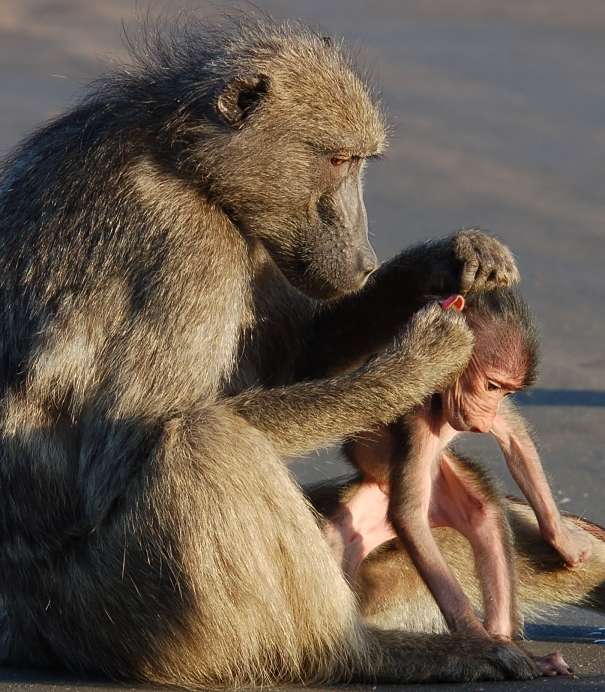 baby baboon getting thorough inspection
baby baboon getting thorough inspectionFemale baboons are cooperative in the rearing of young, and are as fiercely protective of their friends youngsters as they are their own.
Mothers can also be seen giving little lessons and demonstrations to groups of youngsters, and sharing food with multiple kids in the neighborhood.
Males can be helpful with child rearing as well, and will also actively defend any baby baboons from predators.
Baby baboons sometimes fall victim to snakes, eagles, African wild dogs, lions and hyenas.
Chimpanzees have also been known to hunt and kill not only baby baboons but adults as well.
The baboon society is matrilineal in form, which means that mothers, daughters and grandmothers stay together for their lifetimes.
The female baboons in the troop retain the culture and social structure, and pass on this knowledge to the next generation.
The social rank of the mother is usually passed along to the daughter.
Young females stay with their troop for life, but young males usually move on to another troop.
They earn their way in by winning favor with females and sometimes older males by submissive grooming and friendship behaviors, or in some species, with active fighting to gain rank.
This period in a young males life is called "dispersal", and usually occurs sometime around the 7th or 8th year. Males will occasionally live in several different troops over their lifetime.
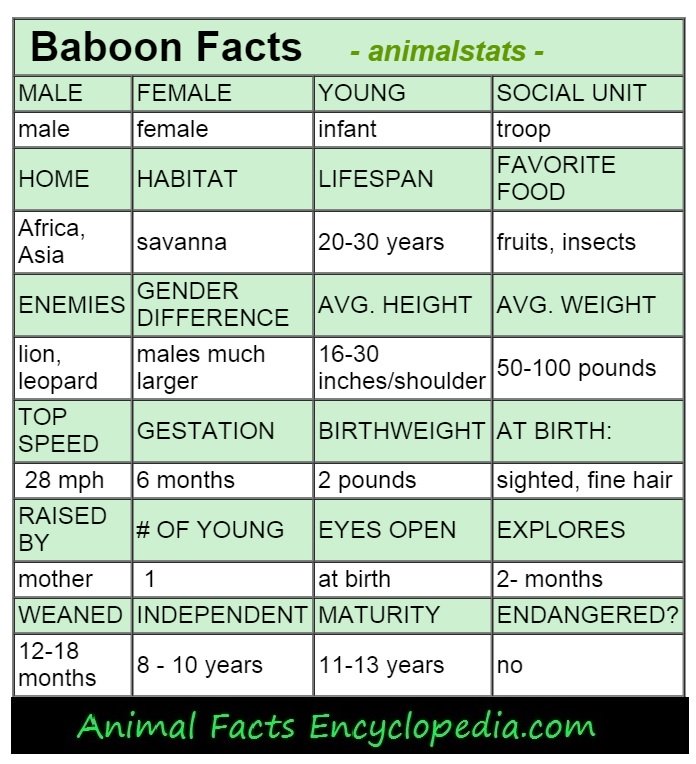
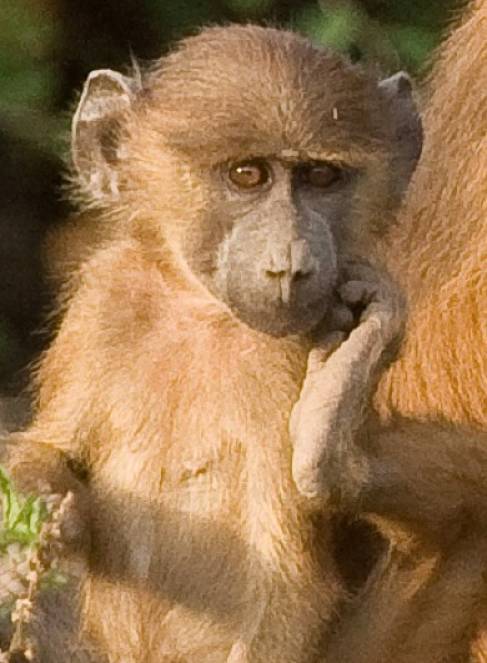

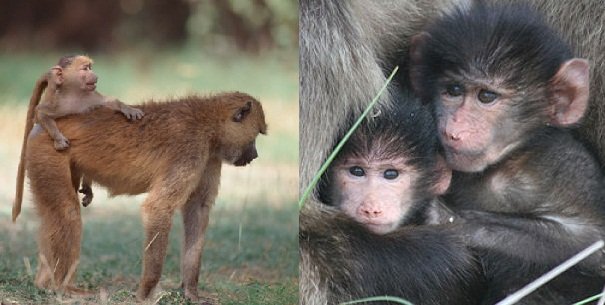
a few more Baby Baboon facts
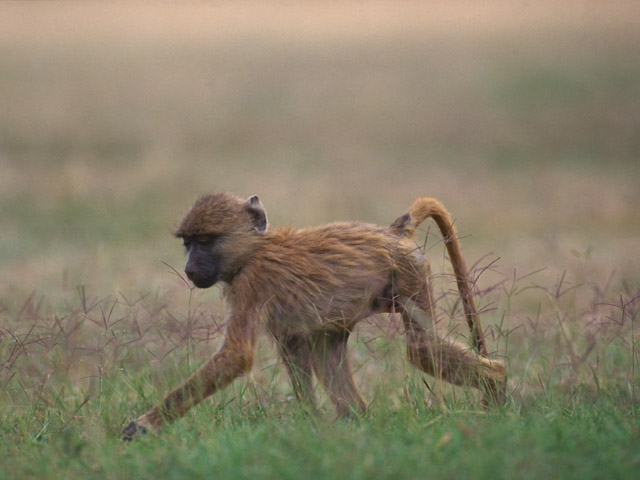
- A baby baboon is called an infant
- Their eyes are open and they are finely furred at birth
- Baby baboons are born with the instinct to grasp with hands and feet
- They can cling to their mother as she runs or jumps through trees
- At a few weeks old they begin to ride on her back
- The babies will be taught by several different adult baboons
- They learn quickly and are extremely intelligent
see more animal extreme closeups
Recent Articles
-
African Animals - Animal Facts Encyclopedia
Oct 11, 16 10:27 PM
African Animals facts photos and videos..Africa is a wonderland for animal lovers, and a schoolroom for anyone who wants to learn about nature, beauty and the rhythm of life -
Baboon Facts - Animal Facts Encyclopedia
Oct 11, 16 10:26 PM
Baboon facts, photos, videos and information - Baboons are very distinctive looking monkeys with long, dog-like snouts and close set eyes. -
Great Apes Facts - Animal Facts Encyclopedia
Oct 11, 16 10:25 PM
Great apes facts, photos and videos..Human beings did not evolve from chimpanzees, modern chimps and gorillas do not appear in the fossil records until much more recently than homo sapiens..




















